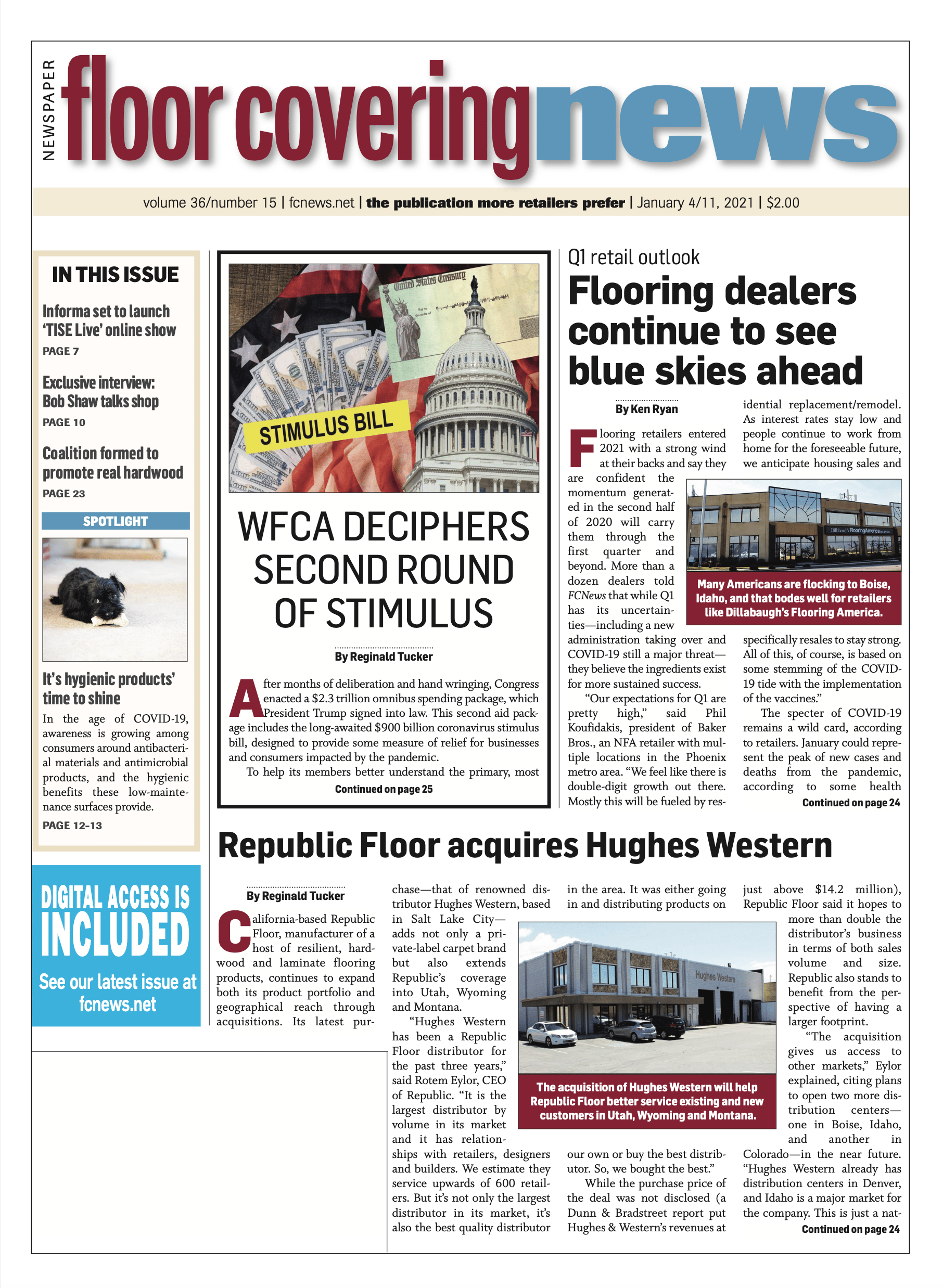By Jack Aspenson
 Waterproof flooring has been growing rapidly in both commercial and residential markets. The benefits have proven to support its rapid growth. Waterproof flooring is low prep, low maintenance and durable. Those advantages combined with an ever-growing choice of finishes equate to a virtually worry-free floor if moisture is not coming from the subfloor.
Waterproof flooring has been growing rapidly in both commercial and residential markets. The benefits have proven to support its rapid growth. Waterproof flooring is low prep, low maintenance and durable. Those advantages combined with an ever-growing choice of finishes equate to a virtually worry-free floor if moisture is not coming from the subfloor.
With waterproof technology available, the consumer’s perception of waterproof flooring is that it can be installed over subfloors without having to evaluate for moisture or pH. The most prominent question of industry professionals pertains to the waterproofing itself: Are the products waterproof from the top down only or from the subfloor up? Furthermore, why do some installations seem to cup or dome? Many products available today are capable of resisting both top-down and occasional small amounts of bottom-up moisture. However, bottom-up issues are not one-size-fits-all problems and must be addressed independently.
Understanding your environment is the key to a successful installation. Installers must address potential moisture issues whether the floors are labeled as waterproof or moisture resistant because the environment can—and often—change.
Waterproof floors provide a non-permeable surface. The nature of these surfaces—dependent on variants in temperature and supply—create equilibrium or balance of RH within the slab. Based on temperature and internal air space humidity levels, this potentially increases or decreases the emissions rate from the substrate. The largest problem for most hard surface products is the third measurement, the power of hydrogen, commonly known as pH, specifically a high alkaline pH between 11-14.
Most waterproof flooring design today includes some form of plasticizer or PVC type product for flexibility and, in some cases, rigidity. When a high pH or alkaline scenario occurs, many waterproof products may cup or dome as well as lose dimensional stability due to the effects of high pH on the PVC or plasticizer utilized in manufacturing.
Moisture in a concrete subfloor can act remarkably similar to a human body. We are more than 60% water, and when the internal temperature rises through physical exertion, the body will release moisture as a vapor, which condenses as perspiration and leaves salts behind. As with the body, concrete floors emit vapor and carry salts, creating a high pH water mixture under impermeable flooring that is detrimental to many hard surface and waterproof products from below. It is recommended that installers perform a pH test—which is inexpensive and quick—prior to installation. If an elevated pH is proven, determining the current MVER is an essential next step. RH is less critical but needed to understand the potential supply.
To mitigate many of these problems, follow the manufacturer’s warranty requirements regarding moisture testing to be completed. This will provide an overall moisture picture of your environment. Floor coverings may change over time, and many of today’s moisture mitigation products can be applied one time to prevent future issues as new flooring is reinstalled. Check with your floor covering supplier for recommendations and carefully read warranties to ensure they meet the need of the area.
Waterproof products provide excellent top-down moisture protection and represent a viable, long-term solution—provided the installation environment moisture is evaluated, understood and addressed.
Jack Aspenson is the CEO and president of S3 Surface Solutions, a client-driven organization that focuses on providing environmentally friendly, simple surface preparation systems that are long lasting and cost effective.

